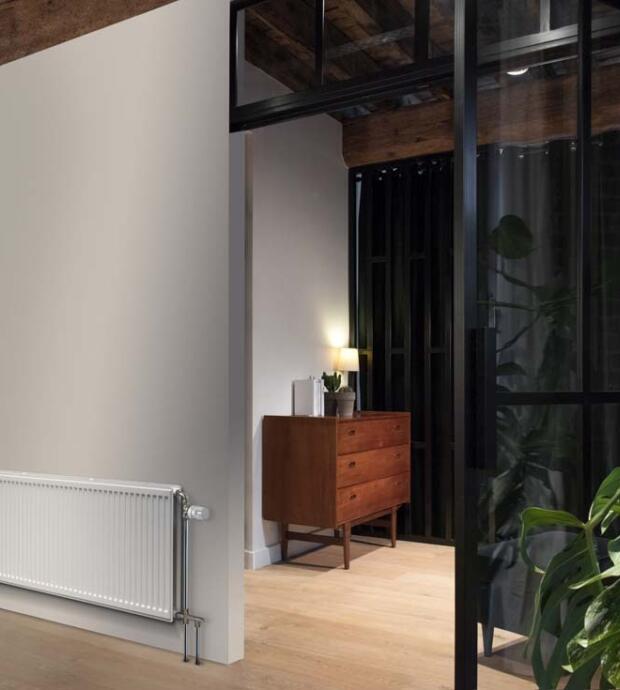When you've been looking for an efficient way to heat your home, you may have been told to install convector heaters? But how do you choose the right system? And what is the difference between a classic radiator and a convector? We will explain the differences between the two heating systems and help you make the right choice.
Another way to heat
A radiator and convector differ in the way that they radiate heat. A space can be heated in two ways: using radiated heat or convection heat. Both types of heating use these two variants but the percentage of radiated heat is very low with convection heating.
What is convection heat?
In order to produce convection heat, a convector sucks in cold air. This air is then heated by an internal heating element. A circulation of warm air is then created. The warm air rises, cools down and is then sucked back into the convector. This indirect heating method creates evenly-distributed warmth through the room.
And radiated heat?
A classic radiator uses mainly radiated heat. This produces horizontal heat waves. Hot water passes through the radiator tubes and heats the surrounding area. Most people find this heating method more pleasant than indirect heating. At the same air temperature, you also feel warmer with radiators than with convectors.
Other differences between radiators and a convector
Previously, a convector was considered to be the most energy-efficient heating option but, nowadays, there are also extremely efficient radiators. Because all Brugman-radiators are low temperature models, you make huge energy savings and heat your home in an ecological way.
Do you have questions about our radiators? Please don’t hesitate to contact us.
